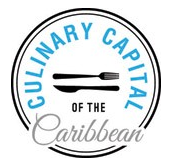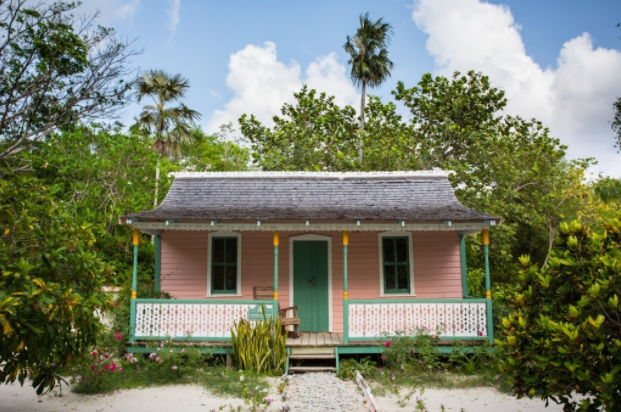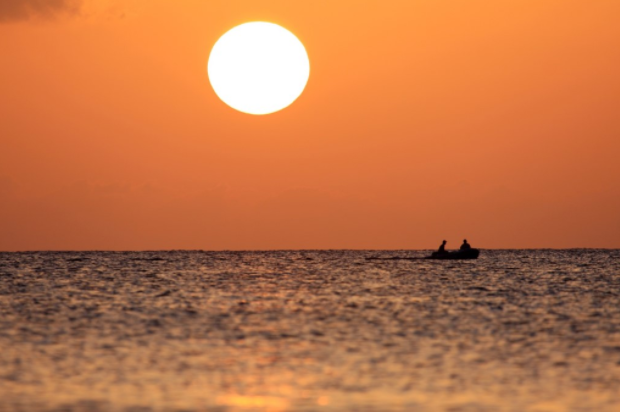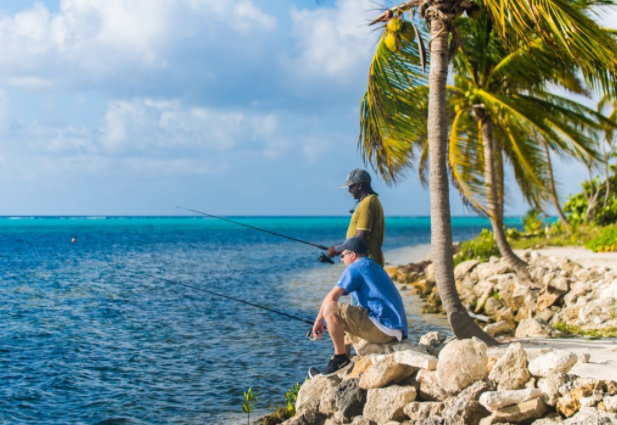History and Way of Life
How The Cayman Islands Got Its Name
The Cayman Islands was first sighted by European explorers on May 10, 1503, owing its discovery to a chance wind that blew Christopher Columbus’ ship off course. On his fourth and final voyage to the New World, Columbus was en route to the island of Hispaniola (home to Haiti and the Dominican Republic) when his ship was thrust westward toward “two very small and low islands, full of tortoises (turtles), insomuch that they looked like little rocks, for which these islands were called Las Tortugas”.
The two islands sighted were Cayman Brac and Little Cayman. A 1523 map showing all three islands gave them the name Lagartos, meaning alligators or large lizards, but by 1526 the Caymanas was being used. The name is derived from the Carib Indian word for the marine crocodile, which is now known to have lived on the islands. This name, or a variant, has been retained ever since. Thus, the word eventually developed into Cayman and adding the word islands, we became the ‘Cayman Islands’.
Who Were The First Inhabitants?
The first recorded English visitor who visited our shores was Sir Francis Drake in 1586. The first two settlers were from the disbanded army of Oliver Cromwell who came in the late 1650’s for the purpose of catching turtle. Isaac Bodden, the first recorded permanent inhabitant of the Cayman Islands, was born on Grand Cayman around 1700. A variety of people later settled on the islands including pirates, refugees from the Spanish Inquisitions, shipwrecked sailors and slaves.
The first recorded settlements were located on Little Cayman and Cayman Brac between 1833 and 1840. Other settlers moved to Grand Cayman as this offered them better protection from attack by Spanish ships, since the settlers could hide in the woodlands when necessary. Likewise, on Grand Cayman there was more land to cultivate. As a result, the settlement of East End and Bodden Town were found around the same time. The earliest population record of the Cayman Islands goes back to the year 1773 when it was estimated that a total of 450 persons lived on the islands.
Food
Caymanian food reflects the rich cultural heritage of the island and incorporates several international flavours. Any dish that can be made with conch, coconut, plantain, cassava, yams, rice and peas, tuna, snapper, mangos and Mahi-Mahi has been prepared in the Cayman Islands. Caymanian food is infused with inspiration from its Caribbean neighbors, particularly Jamaican cuisine which has found its way onto many of our menus. Traditional Caymanian dishes include Cayman-style beef, conch stew, turtle meat, and old-fashioned fish fry.
Find traditional Caymanian recipes on our Recipe page

Music
The Cayman Islands share a special relationship with music. Traditional Caymanian music, played by Cayman Kitchen Bands, is heavily inspired by the jazz, folk, calypso and reggae genres. Popular instruments of choice include the guitar, fiddle, accordion, mouth organ, grater and the drums. The Cayman Islands music scene is also influenced by modern music, including dancehall and international pop. There are several festivals held throughout the year that bring people together and give them the opportunity to hear the sweet sound of Caymanian music.

Art and Architecture
The Cayman Islands are known for their unique and diverse variety of local arts and crafts. Whether it’s due to the stress-free environment of a Caribbean island or just pure talent, the Cayman Islands is where you’ll find some of the most unique, intricate, and inspiring pieces of work.
In 1997, the National Gallery of the Cayman Islands was formed, solidifying a place for Caymanian art in the public eye. The hidden treasures of original Cayman art continue to be developed and unearthed as the gallery expands. The Cayman National Cultural Foundation (CNCF) is another important champion for Cayman art. Seeking to preserve artistic expression, the foundation supports performing, visual, and literary arts of the Caymanian people.
Several art festivals take place throughout the year in the Cayman Islands. Key on-island art festivals include:
Cayfest
Cayfest is the National Festival of the Arts in the Cayman Islands. Sponsored by the CNCF, this festival is a vivacious display of Caymanian expression that takes place over a few months, offering everything from fashion shows to comedy hours to musical performances.
Gimistory
Gimistory is the Cayman Islands International Storytelling Festival. Bringing together storytellers from all over the world, the festival takes place during late fall. Admission is free—as is the fried fish, fritters, and “Swanky”, Cayman style lemonade, served during or after story time.

Architecture
Early architecture in the Cayman Islands is reflective of the settlers from the 1700’s, consisting of basic structures built from local timber and palms. These thatch-work buildings were meticulously crafted from the leaves of Cayman’s national tree, the Silver Thatch Palm. Built from the ground with sand floors, these buildings were not dependable under intense weather. However, the discovery of water resistant ironwood car, a material unique to the islands, helped to make stronger houses.
With increased influence from the US over time, bungalows have transformed into modern beachside structures. Today, architecture in the Cayman Islands is varied with some buildings still taking stylistic cues from the original settlers. From unique carpentry and stone work to timber-based and bricked, the architecture of the Cayman Islands developed as the population did.


Maritime Heritage
Completely surrounded by some of the deepest waters in the world teeming with marine life, the sea was an intrinsic part of life for early Caymanians. Many looked to the sea for their livelihood; fishermen, coat captains, skippers, deck hands, and rope makers were a vital part to the Cayman economy and everyday life.
For about two hundred years, the bulk of Caymanians survived on the fruits of the sea. Caymanians made catboats to go fish at nearby reefs, eventually being recognized as master shipbuilders. Over the years there have been literally hundreds of schooners, catboats, skiffs and, in later years, even motor vessels built on the shores of the Cayman Islands.
Men also foraged far and wide across the Western Caribbean aboard turtle schooners to bring back meat for turtle stew. Further proving themselves in the maritime world, Caymanians became known as first class mariners, sought after by the largest shipping companies as captains, navigators and crew for their vessels.


Government
The Cayman Islands is a British Overseas Territory that operates under a parliamentary democracy with judicial, executive, and legislative branches. Listed by the UN Special Committee of 24, this top Caribbean destination is one of the last non-self-governing territories. Appointed by Her Majesty the Queen, Her Excellency, Mrs. Helen Kilpatrick, CB is the Governor of the Cayman Islands. Fulfilling a term of four years, Mrs. Kilpatrick presides over Cabinet, the executive level within the legislative government.
The current constitution of the Cayman Islands, the fourth in its history, came into effect on 6 November, 2009. It provides for the government of the Cayman Islands as a British Overseas Territory including a governing Cabinet comprised of two official members and five elected members called Ministers. Put in place by the Governor, the two official members of Cabinet are Deputy Governor and Attorney General.
Although these officials have seats in the elected Legislative Assembly, they do not vote. The five ministers are voted into office by the 18 elected members of the Legislative Assembly. One of the ministers, the leader of the majority political party, is appointed Premier by the Governor.
Approximately 80 departments and sections carry out the duties of the government. These departments are joined by several statuary boards and authorities.
For additional information on the Cayman Islands Government, please visit www.gov.ky or www.legislativeassembly.ky.